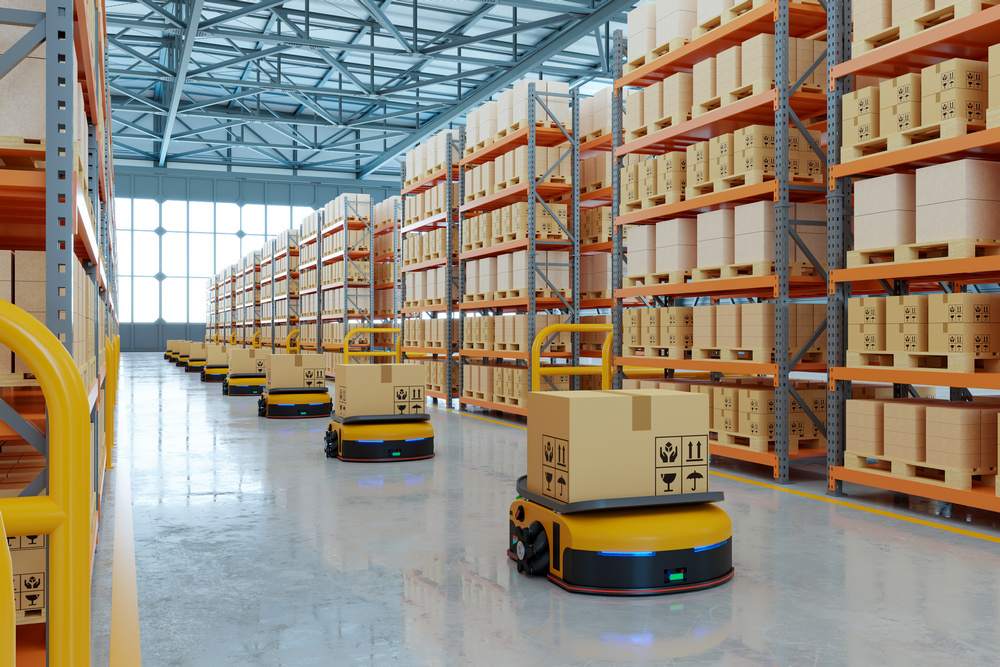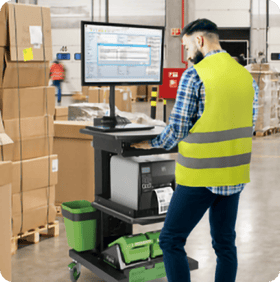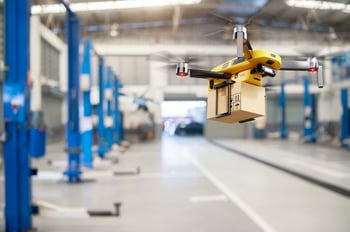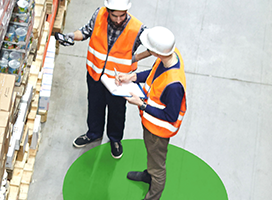
New global economic realities are encouraging businesses to pursue more aggressive sustainability strategies. Until recently, sustainability has been linked to environmental goals for many companies and, as a result, has been treated as something like an add-on to corporate strategies. But choosing smart solutions for fulfillment can help businesses address many ongoing strategies and become more sustainable at the same time.
Sustainability is No Longer an Option
 While being more environmentally friendly is the right thing to do for the planet, many businesses are finding they don’t have much choice when it comes to sustainability matters. Countries around the world are increasingly legislating sustainability, making it mandatory for businesses to drive positive change.
While being more environmentally friendly is the right thing to do for the planet, many businesses are finding they don’t have much choice when it comes to sustainability matters. Countries around the world are increasingly legislating sustainability, making it mandatory for businesses to drive positive change.
In the UK, by 2023, large businesses will be required to outline in detail how they plan to hit proposed Treasury climate change goals. In Mexico, there are new bans on trucks and buses driving through high-population areas during certain times of the day. And California now requires that new buildings be more energy-efficient and certain packaging be compostable or recyclable by 2032.
Beyond regulatory pressures, businesses must also consider consumer preferences. According to a recent Kearney survey, 80% of customers consider the environmental impact of their purchases. So, businesses that place a focus on sustainability are creating value for customers and getting a competitive edge.
The increased focus on sustainability is being felt by the logistics and materials handling industry. This comes at a time when many businesses are facing other challenges, such as higher energy rates and labor shortages. But, it turns out that focusing on sustainability can also address some of those other supply chain shortfalls.
Automating Sustainability With Smart Fulfillment Solutions
Automated order fulfillment solutions can improve sustainability and help businesses achieve better overall results. Logistics companies can improve sustainability by focusing on maximizing the use of available space, optimizing materials handling, and automating manual processes. These initiatives will support the three pillars of sustainability, which are:
- Environmental Pillar — Sustainability initiatives should reduce a business’s carbon footprint.
- Social Pillar — Sustainability initiatives should promote the health, safety, and wellbeing of customers and employees.
- Economic Pillar — Sustainability initiatives should ensure businesses make a positive impact while continuing to thrive economically.
Here are some of the ways companies can automate sustainability using smart fulfillment solutions.
1. Space Optimizaiton
With the explosive growth of eCommerce sales, massive warehouses have become the norm in many markets. But these huge buildings aren’t the most sustainable options. When logistics companies optimize their storage space by using vertical space and more compact bins, this enables them to save valuable floor space and use less energy.
2. Improving Visibility
 Globally, nearly 35 percent of online orders are returned by customers, and 25 percent of those end up in landfills. Companies can reduce landfill waste and improve the customer experience at the same time by injecting more visibility into the fulfillment process.
Globally, nearly 35 percent of online orders are returned by customers, and 25 percent of those end up in landfills. Companies can reduce landfill waste and improve the customer experience at the same time by injecting more visibility into the fulfillment process.
Using a combination of RFID tags and other technology, consumers can track their orders until they are delivered. These solutions also integrate with other automation processes to reduce errors.
3. Autonomous Vehicles
Energy-efficient autonomous vehicles can reduce dangerous and repetitive tasks in the warehouse, like loading and unloading vehicles. This frees up human labor to take care of other job functions in order fulfillment.
4. LED Lighting
LEDs are up to 80 percent more energy efficient than fluorescent lightbulbs. Just 5 percent of the energy they draw becomes heat, and the other 95 percent gets turned into light. By comparison, fluorescent bulbs transform 95 percent of their energy to heat and just 5 percent into light.
Switching to LED lighting allows warehouses to reduce the number of lights required. These lights also last much longer, up to three years, compared to about 45 days of continuous use with a traditional bulb.
5. Automated Picking & Packing
 It’s estimated that roughly 90 percent of global warehouses still heavily rely on manual picking and packing. This is inefficient because it requires more manual labor, more energy to power facilities, and can lead to higher error rates.
It’s estimated that roughly 90 percent of global warehouses still heavily rely on manual picking and packing. This is inefficient because it requires more manual labor, more energy to power facilities, and can lead to higher error rates.
For these reasons, many businesses are transitioning to warehouse automation solutions, like automated picking and packing. When warehouses leverage technology, such as mobile powered carts to reduce unnecessary walking or even go completely “lights out,” this addresses labor shortage issues and improves overall efficiency.
6. More Direct Shipping Routes
It shouldn’t be shocking that the shipping industry struggles with efficiency. When LTL (less-than-a-truckload) shippers and carriers are the norm in order fulfillment, this isn’t making the most use of available resources.
Logistics providers can leverage data to find more direct shipping routes to improve sustainability. They can also reduce paperwork through automated work orders and documentation to cut down on waste.
7. Alternative Energy Sources
The Leadership in Energy and Environmental Design (LEED) certification is an important achievement for logistics partners that verifies a warehouse is up to the third party’s latest environmental standards. The focuses of LEED certification are on reducing energy usage, lowering carbon emissions, and conserving water.
Some of the biggest improvements can be achieved by switching to renewable energy sources like solar and wind. For example, Amazon is planning to install solar panels on the rooftops of its fulfillment centers worldwide.
8. Drones
 At some point, we’ll see drones making last-mile deliveries. But, currently, drones are being used to improve efficiency in warehouses. They can fly autonomously through a warehouse to collect data on pallet and equipment locations, completing tedious work quickly and effortlessly. Drones with RFID scanners can also verify inventory levels and keep track of perishable goods like meat or fruit.
At some point, we’ll see drones making last-mile deliveries. But, currently, drones are being used to improve efficiency in warehouses. They can fly autonomously through a warehouse to collect data on pallet and equipment locations, completing tedious work quickly and effortlessly. Drones with RFID scanners can also verify inventory levels and keep track of perishable goods like meat or fruit.
As more and more logistics providers face pressure to “go green,” many are realizing that they can address many of their challenges and be more environmentally friendly by doing just that. Various automation solutions in order fulfillment allow businesses to reduce energy usage, become more efficient, and have a smaller environmental impact.












